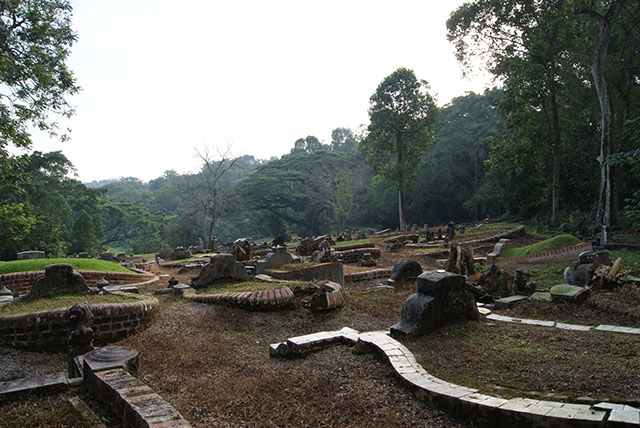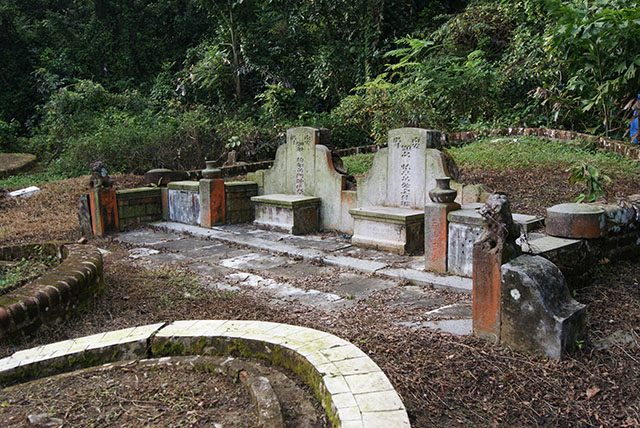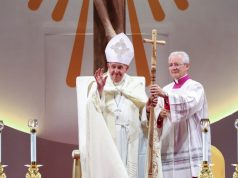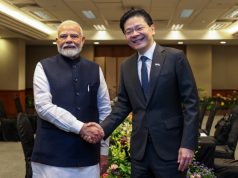SINGAPORE — When Singapore’s government said it would exhume about 4,000 graves in the defunct Bukit Brown cemetery for an eight-lane highway, an unusually vocal campaign grew quickly to save one of the last remaining artifacts of the past in the modern city.
The cemetery, a rare patch of jungle surrounded by manicured gardens and high rises, has about 100,000 graves, including hundreds of early Chinese immigrants. It is also considered an important relic of the Japanese occupation and World War Two.
Although the cemetery closed for burials nearly 50 years ago, descendants still visit their ancestors’ graves. But that ritual will soon end, as Bukit Brown is scheduled to be cleared for housing by 2030.
“This is a living museum,” said Darren Koh, a volunteer with advocacy group All Things Bukit Brown, which has offered guided walks in the cemetery since 2011, when the exhumations were announced.
“We lost a lot of history and heritage in the other cemeteries that were cleared, so we were galvanized into action to save Bukit Brown,” he said, fighting to be heard above the roar of traffic and construction on the new highway.
With some 5.6 million people in an area three-fifths the size of New York City – and with the population estimated to grow to 6.9 million by 2030 – Singapore is running out of space.
The island nation has long reclaimed land from the sea and plans to move more of its transport, utilities and storage underground to free up space for housing, offices and greenery.
It has also cleared dozens of cemeteries for homes and highways.
“Planning for long-term land use in land-scarce Singapore often requires us to make difficult decisions,” the city’s Urban Redevelopment Authority (URA) and the Land Transport Authority (LTA) said in a statement.
Bukit Brown has been earmarked for residential use since 1991, and while the government is committed to “retaining and protecting our natural and built heritage, we need to also balance it against other needs such as housing,” officials said.
Tomb sweeping
The Chinese have traditionally believed that the dead must be buried and that without a proper burial the soul will not rest, but will wander about as a “hungry ghost”.
But the burial practice has changed in increasingly crowded cities from Hong Kong to Taiwan to China.
Traditional grave burials gave way to cremation, and the use of columbaria to store urns with ashes. As even columbaria became crowded, city authorities encouraged people to disperse the ashes in the sea, woodlands or parklands.
“The conception of cemeteries as space-wasting activity takes precedence over the idea of cemeteries as sites of leisurely activity,” said Lily Kong, a geographer previously at the National University of Singapore.
“To depart from the practice of grave burial requires a significant cultural shift. In many ways, it may be said that this shift has been made,” she wrote in a 2012 paper on burial rituals.
Singapore in 1998 announced a 15-year burial period, after which bodies are dug up and cremated or interred in smaller plots.

Hong Kong — where even the columbaria are running out of space — has a six-year limit. Taiwan has similar limits and has long encouraged cremations and eco-burials.
In China, authorities said in 2014 they were targeting a cremation rate of close to 100 percent by the end of 2020.
They also encourage online memorialization, where family members can set up a website for the deceased, and make virtual offerings of flowers, incense and wine, including during the annual Qing Ming “tomb sweeping” festival.
That is when families clean the tombs, bring offerings of food and drink, and burn joss sticks and paper money to give their ancestors a comfortable afterlife.
Following the announcement of the exhumations of 4,153 graves in Bukit Brown, Singaporeans rallied on social media and showed up in the hundreds for walks in the cemetery.
The cemetery, dotted with headstones bearing fading Chinese inscriptions among the raintrees and thick undergrowth, was added to World Monuments Watch, which lists heritage sites under threat — a first for a Singapore landmark.
The United Nations Special Rapporteur for cultural rights wrote to the government, asking it to preserve Bukit Brown’s “remarkable natural, cultural and historical value”.
But to no avail. The graves were exhumed, and the first section of the new Lornie Highway opened in late-October.
“We shouldn’t always have to choose between heritage and development,” said Claire Leow, who also volunteers at All Things Bukit Brown, citing old hawker centers and other landmarks that have disappeared.
“More people are choosing to be cremated; it’s all the more reason to preserve Bukit Brown as a public space for all,” she told the Thomson Reuters Foundation.
Unmarked
Much of Singapore is built on old graveyards, including Orchard Road, the city’s main shopping belt.
The Bidadari cemetery was cleared of more than 100,000 Christian and Muslim graves for a new housing estate, while Choa Chu Kang — Singapore’s biggest and only active cemetery — will be cleared of more than 80,000 graves for an expanded air base.
At Bukit Brown, the graves were exhumed individually and the remains cremated. The ashes were put in urns that were placed in a columbarium.
But authorities first consulted with clan members and historians to agree on a way to document the graves.
“Without such documentation and research, it is difficult to assess the heritage value that is at stake, and make informed decisions,” said Hui Yew-Foong, a fellow at the Institute of Southeast Asian Studies, who led the effort.
“And if the government does make the decision to clear the cemeteries, at least a good record is made for posterity.”
More than two-thirds of the exhumed graves were not claimed because relatives had died or forgotten, Leow said.
But others are still claimed.
One such grave “stood unmarked and forgotten” for six decades before being identified.
“Finally, I can place a name to the grave that is my grandfather’s and be a dutiful grandson,” Norman Cho, a 40-year-old Singaporean, wrote in a blog on All Things Bukit Brown.
It is these moments that give Leow hope.
“Cemeteries should not be seen as a waste of space, but as a part of our history and culture,” she said.
“In losing them, we lose little bits of ourselves.” — Reporting by Rina Chandran; Editing by Claire Cozens










